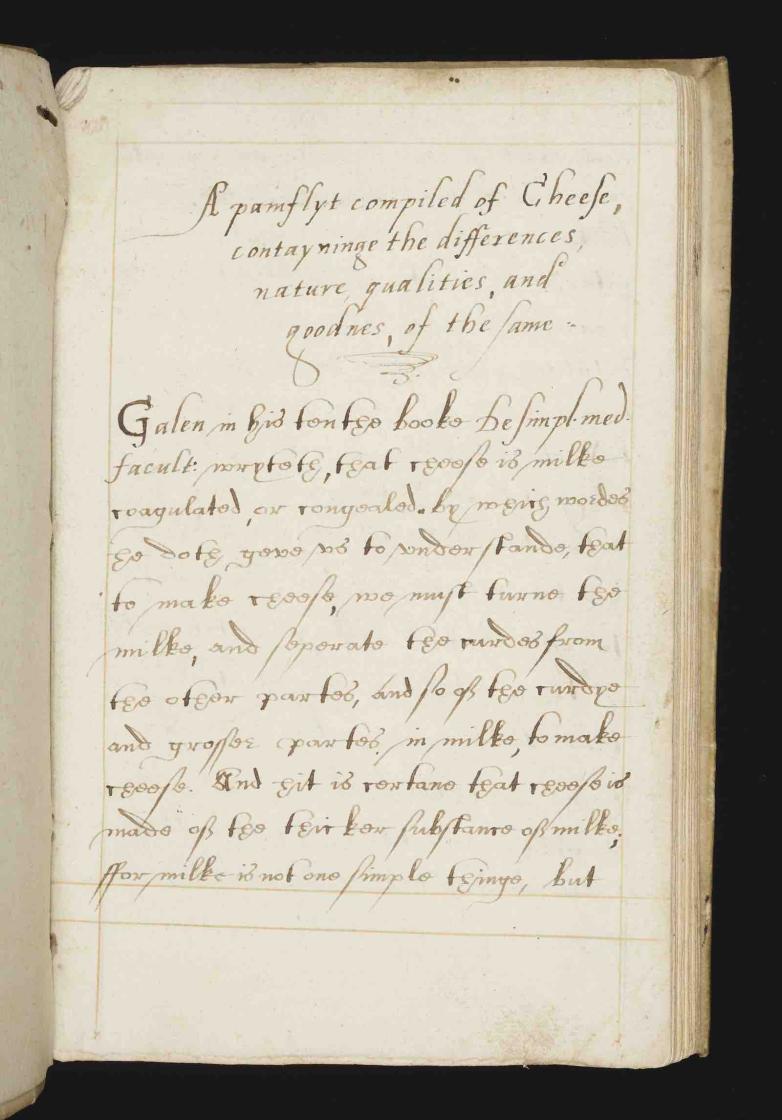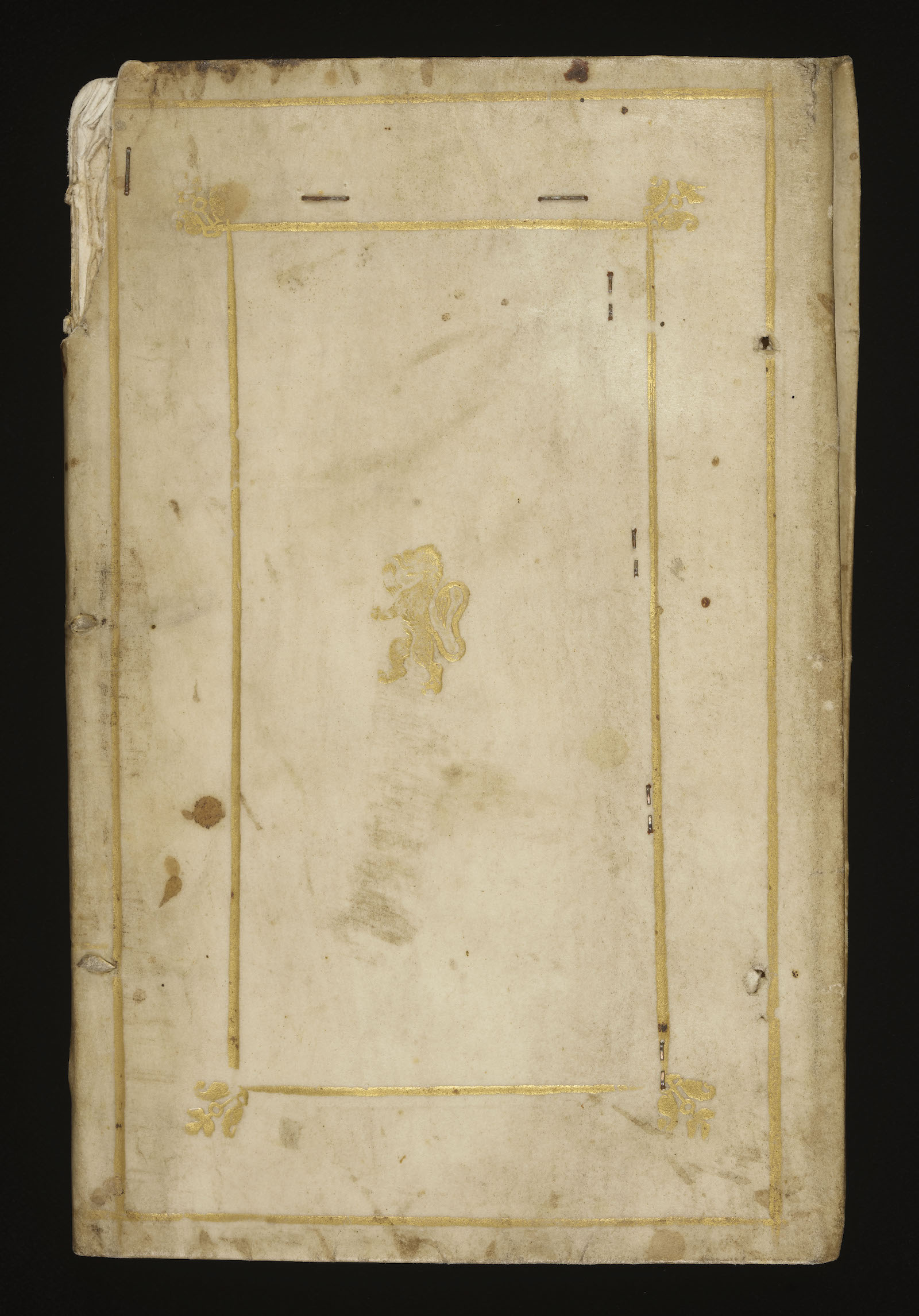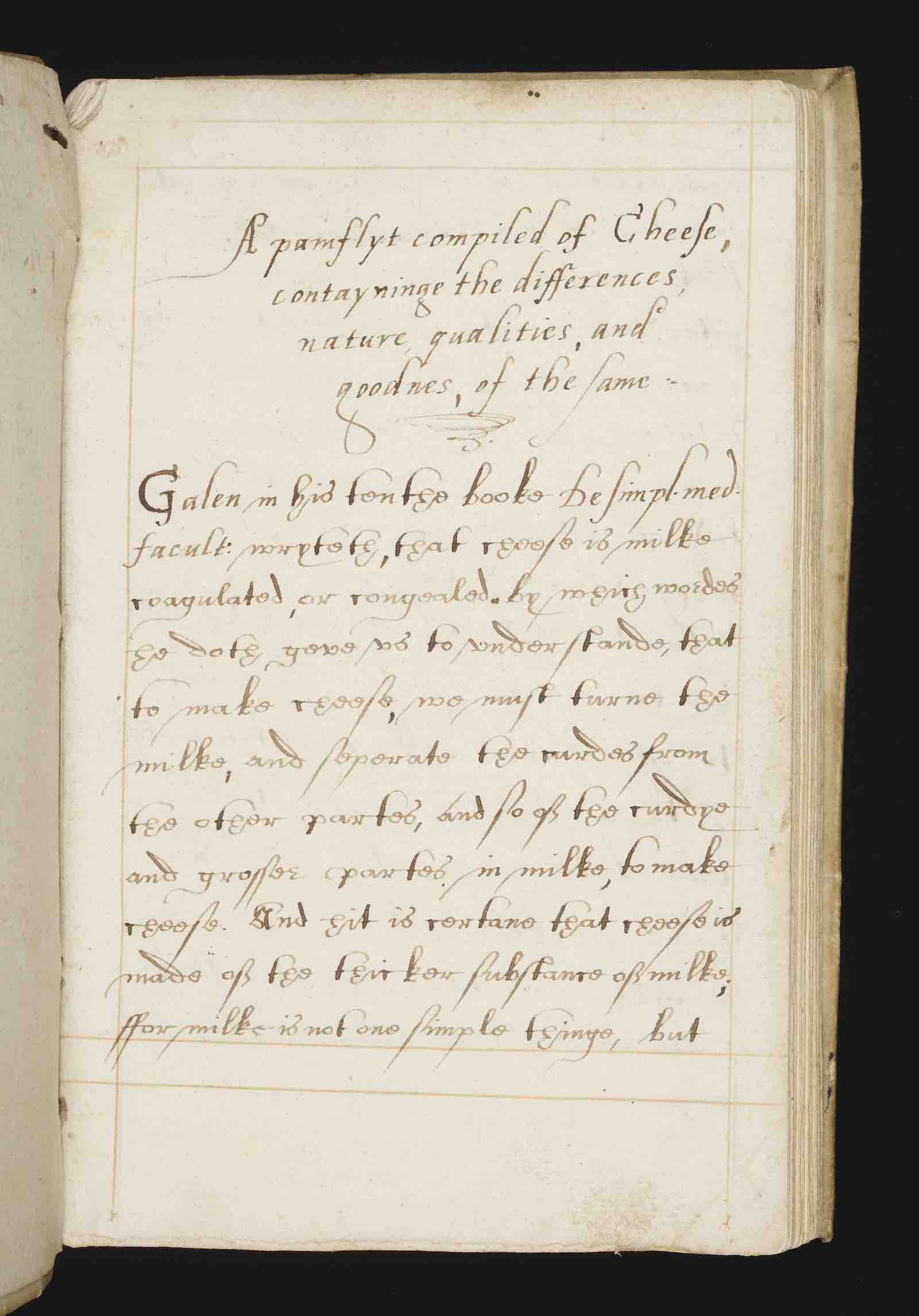“The manuscript is probably the first comprehensive academic study of a single foodstuff to be written in the English language”, said food historian Peter Brears. “I’ve really never seen anything like it. Although cheese has formed part of the human diet since the introduction of farming in the prehistoric periods, there is little evidence of its character and places of production in medieval Britain except for entries for anonymous cheeses in household accounts.
“The Pamflyt follows typical Elizabethan practice of collecting all available information from Classical authors such as Galen and Virgil, as well as the Persian philosopher-physician Abu Bakr al-Razi, and the most reputable contemporary physicians at the University of Salerno. To gain practical information, the author went on to "diligently inquire of country folke, who gave their experience in theis matters"”.
The identity of the book’s author remains unclear, but three owners’ names show that it had an impressive social life. It was circulated in the group around the Dudleys, the family of courtiers whose influence throughout the Tudor period was at a peak around the time of the manuscript’s creation. In a note on the flyleaf, Clement Fisher, MP for Tamworth, asks for the book to be returned to him when it has been "perused". Walter Bayley, whose name appears at the end of the text, was Regius Professor of Medicine at Oxford and physician to Elizabeth I, and Edward Willoughby of Bore Place, Kent, came from another family of parliamentarians.
“The mention of Kingsnorth, a village near Ashford in Kent, as a cheesemaking centre in a county otherwise unrecognised for its cheeses, demonstrates a degree of local knowledge that appears to confirm Edward Willoughby as the author”, said Brears.
Caroline Bell, co-founder of artisan cheesemakers Shepherds Purse based in the nearby Yorkshire town of Thirsk, describes the book as “a wonderful find, delivering a fascinating insight into the culture of cheese and cheesemaking in 16th century Britain. As cheesemakers ourselves, it gives us a chance to appreciate the evolution of the practice from ancient times to now. Documentary evidence of this chapter in British food history, with our traditional regional cheeses mentioned and evaluated, and so many interesting observations on early practices, is invaluable.”
The Pamflyt was acquired at auction earlier this year by the University of Leeds with the support of a grant from Friends of the National Libraries (FNL). It will join the Cookery Collection at the University of Leeds Library, one of the great collections of printed and manuscript material relating to domestic science. Jay Rayner, food journalist, broadcaster and University of Leeds alumnus, commented: It's thrilling that this extremely rare document, taking us right back to the origins of cheesemaking in the UK, in itself part of the very weft and weave of our food culture, has been added to the collection.”


















